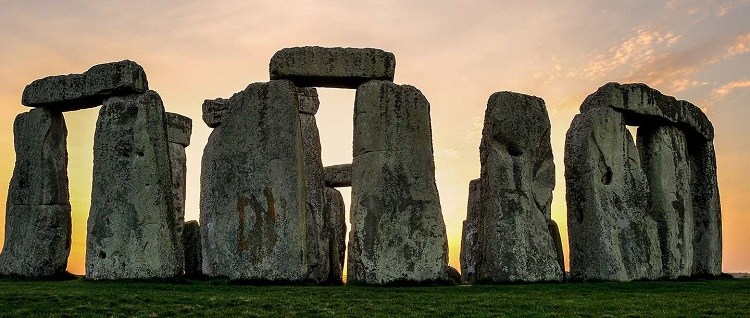Except, of course, for all the ridiculously irresponsible lies we’re being fed. Here are ten of the biggest lies we have heard from ages :
1. Christopher Columbus discovered America in 1492

One of the biggest pieces of lie in the discovery of this great nation. The truth is that America was inhabited by nomadic tribes thousands of years ago who crossed the Bering land bridge from across Alaska. Historical and archaeological evidence supports several theories that the Vikings like Leif Erikson discovered Newfoundland in Canada which he named “Vinland” in 1000 AD. The only thing Columbus achieved was the colonization and conquest of natives. (Source)
2. Einstein Failed in Maths
Einstein was a mathematical prodigy, and before he was 12, he was already better at arithmetic and calculus than you are now. Einstein was in fact so smart that he believed school was holding him back, and his parents purchased advanced textbooks for him to study from. Not only did he pass math with flying colors, it's entirely possible that he was actually teaching the class by the end of semester.
When he was first shown this supposed expose of his early life, Einstein allegedly just laughed, and probably went on to solve another 12 mysteries of quantum physics before dinner. By the time he finally kicked the bucket in 1955, it's entirely possible that "failure" was the one concept that Albert Einstein had never managed to master. (Source)
3. Did Paul Revere actually say “the British are coming, The British are coming?

During Paul Revere’s famous midnight ride, he did not shout out “the British are coming”, he didn’t need to. It was just a dramatization of the famous event to make it seem more patriotic. Moreover, Paul Revere’s ride was an extremely discreet mission and you could hardly expect someone to give away himself now do you? (Source)
4. Columbus set out to prove the world was round.
If he did, he was about 2,000 years too late. Ancient Greek mathematicians had already proven that the Earth was round, not flat. Pythagoras in the sixth century B.C.E. was one of the originators of the idea. Aristotle in the fourth century B.C.E. provided the physical evidence, such as the shadow of the Earth on the moon and the curvature of the Earth known by all sailors approaching land.
And by the third century B.C.E., Eratosthenes determined the Earth's shape and circumference using basic geometry. In the second century C.E., Claudius Ptolemy wrote the "Almagest," the mathematical and astronomical treatise on planetary shapes and motions, describing the spherical Earth. This text was well known throughout educated Europe in Columbus' time.
Columbus, a self-taught man, greatly underestimated the Earth's circumference. He also thought Europe was wider than it actually was and that Japan was farther from the coast of China than it really was.
For these reasons, he figured he could reach Asia by going west, a concept that most of educated Europe at the time thought was daft — not because the Earth was flat, but because Columbus' math was so wrong. Columbus, in effect, got lucky by bumping into land that, of course, wasn't Asia.
The Columbus flat-earth myth perhaps originated with Washington Irving's 1828 biography of Columbus; there's no mention of this before that. His crew wasn't nervous about falling off the Earth. (Source)
5. Humans Evolved from Apes
In this scenario Christians have it right—but not the way they think. Early classes on evolution usually leave one basic impression: humans evolved from apes. Go to a zoo, and you can watch your genetic ancestors frolicking and flinging poop at each other.
But that’s not the way it happened. After all, evolution works by eliminating the inferior species while the stronger, better-adapted ones thrive. If that had happened then there wouldn’t be any apes left, because we would have outcompeted them. The more likely theory is that humans and the great apes—chimpanzees, gorillas, and orangutans—started with a common ancestor, and then evolved in separate directions over the years. Specifically: four, eight, and twelve million years ago, respectively.
And it’s still happening—in the animal kingdom, at least. Researchers believe that less than one million years ago the eastern and western gorillas parted evolutionary ways, and are now developing in different directions. (Source)
6. Diamonds Are Made from Coal
If you believe that diamonds are made from highly compressed coal, don’t worry—so does everyone else. But it’s completely false: diamonds are found in vertical shafts filled with rocks formed by volcanoes, while coal is mainly found among other types of rocks—like limestone and shale.
Coal is almost never found in the same type of environment as diamonds. Coal is formed near the surface from plant matter, while diamonds are formed in the Earth’s mantle—over ninety miles (145 km) closer to the core—and then carried up to the crust during volcanic eruptions.
It’s true that diamonds are formed from carbon by intense heat—2,000 degrees Fahrenheit (1,100 degrees Celcius)—and high pressure, but it’s unlikely that the carbon comes from coal. So while the idea of a lump of coal becoming a beautiful diamond makes a pretty picture, it’s still one big spoonful of lies.
On the other hand, modern science can pretty much turn anything into a diamond in the lab. (Source)
7. Liquid Glass
The myth: old windowpanes are thicker at the bottom because glass is a slow moving liquid.
At some point in time, a historian looked at an ancient windowpane and noticed something unusual: the glass was thicker at the bottom than at the top. Since there was no other way to account for it, he came to the conclusion that glass was an extremely slow moving liquid that settled over the years, resulting in thin, brittle glass at the top that gradually thickened towards the bottom edge of the windowpane.
And then everybody believed him. The myth spread until even college professors were teaching it in their classes, since even scientists don’t understand science sometimes. But one researcher recently decided to test the viscosity (rate of flow) of glass, and came to the result that even the least viscous type of glass wouldn’t change much before 10^32 years—about three times the length of the existence of the universe. Though why we should believe him more than the first scientist is a bit of a mystery—effectively they are both making it up.
The real reason antique glass windows are bottom-heavy goes back to the way they were made in the Middle Ages. Window-makers would blow glass into a large sphere, then flatten it into a disk by spinning it. The spinning motion caused the edges of the disk to thicken, much like spinning a pizza dough. And when they cut the disk into windows, they placed the thicker side at the bottom for stability. (Source)
8. Vikings wear horned helmets

There is no evidence, archaeological or otherwise, that Viking warriors wore any type of horns or wings on their helmets. What we do have is one single piece of evidence, the ninth century Oseberg tapestry, suggesting a rare ceremonial use (the relevant figure on the tapestry may even be that of a god, rather than representative of real Vikings) and plenty of evidence for plain conical/domed helmets made mainly of leather. (Source)
9. Deoxygenated Blood Is Blue (Which Is Why Your Veins Appear Blue)
If you look closely at the inside of your wrist, you’ll probably see a small network of blue veins running up into your hand. Despite what they might teach you in elementary school, that’s not blue blood running through there. The myth is that deoxygenated blood is blue, while blood leaving the heart is red because it’s been filled with fresh oxygen. When you bleed, the blood is immediately red because it’s exposed to oxygen in the air.
But if you’ve ever given blood or had blood taken at the doctor’s office, you’ll know that it’s not some alien blue liquid filling up that sealed tube—it’s, well, it’s blood. The reason your veins look blue is a simple trick of the light, and the way your eyes perceive colors. When light filters through the layers of skin, the low frequency wavelengths (like red) are refracted by pigmentation and thin fat layers, leaving mostly blue light to reflect back to your eyes. An albino person will usually have red veins because of the lack of pigmentation in their skin. (Source)
10. Stonehenge has been standing in the same location for over 4000 years

This is supposed to be one of the biggest ancient mysteries but that’s far from the real truth. Archaeological evidence points to the fact that Stonehenge was created in Wales and dragged to Wiltshire UK in around 2900 BC. (Source)


